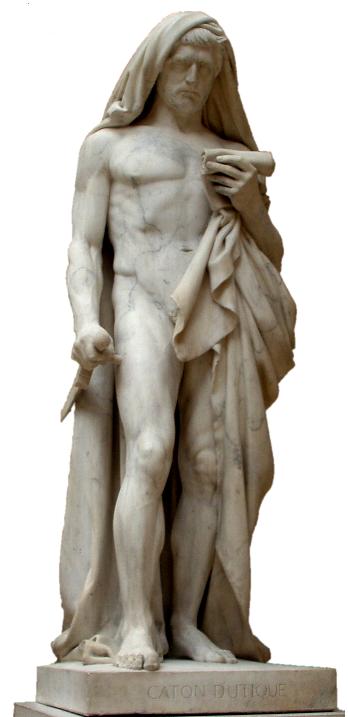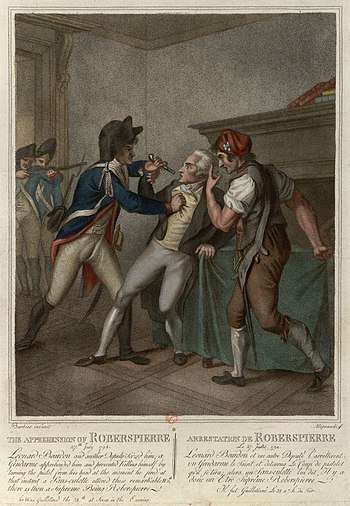Suicide/Moral Reasoning
An Act of Despair
[edit | edit source]Shame
[edit | edit source]

Lost Love
[edit | edit source]

Political Statement
[edit | edit source]
Suicide is often used as a show of ultimate protestation against political movements, decisions or to cause society to reexamine the morals or goals of political figures. Such actions were more common in the higher strata of society in ancient times as only those would make a public statement. One of the most famous events of this nature was the suicide of Marcus Porcius Cato Uticensis (95 BC, Rome – April 46 BC, Utica), commonly known as Cato the Younger (Cato Minor), a statesman in the late Roman Republic. Cato had fought Caesar, a de facto dictator, on the side of Pompey, that refused to align to the new power. After a reversal, where Caesar defeated most of the supporters of Pompey, Cato escaped to the province of Africa, to Utica, without conceding defeat, and was pursued by Caesar.
In Utica, after a major battle, where outnumbered Caesarian legions defeated the opposing army. He committed suicide in an attempt to deny any political gain of being captured, or even to permit Caesar the opportunity to grant him a pardon.
- According to Plutarch surviving writings, in April 46 BC Cato botched an attempt to kill himself, due to an injured hand. Plutarch wrote
"Cato did not immediately die of the wound; but struggling, fell off the bed, and throwing down a little mathematical table that stood by, made such a noise that the servants, hearing it, cried out. And immediately his son and all his friends came into the chamber, where, seeing him lie weltering in his own blood, great part of his bowels out of his body, but himself still alive and able to look at them, they all stood in horror. The physician went to him, and would have put in his bowels, which were not pierced, and sewed up the wound; but Cato, recovering himself, and understanding the intention, thrust away the physician, plucked out his own bowels, and tearing open the wound, immediately expired."


In Prevention of Worse Faith (Reduction of Damages)
[edit | edit source]

